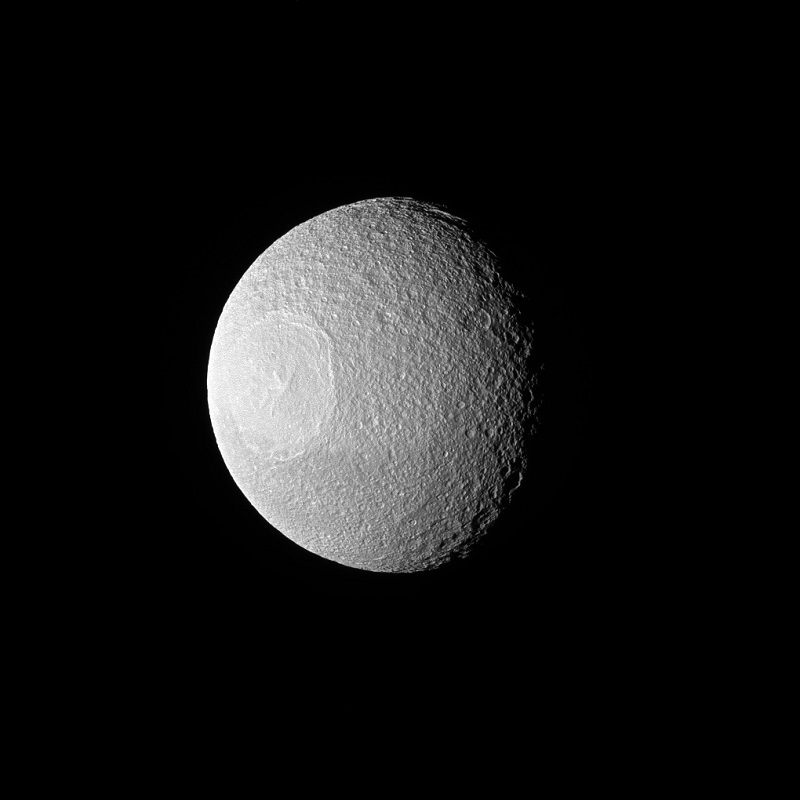NASA dixit:
“November 10, 2016. Tethys, one of Saturn’s larger icy moons, vaguely resembles an eyeball staring off into space in this view from NASA’s Cassini spacecraft. The resemblance is due to the enormous crater, Odysseus, and its complex of central peaks. Like any solar system moon, Tethys (660 miles or 1,062 kilometers across) has suffered many impacts. These impacts are a prime shaper of the appearance of a moon’s surface , especially when the moon has no active geological processes. In this case, a large impact not only created a crater known as Odysseus, but the rebound of the impact caused the mountainous peaks, named Scheria Montes, to form in the center of the crater.
This view looks toward the leading side of Tethys. North on Tethys is up and rotated 1 degree to the left. The image was taken in green light with the Cassini spacecraft narrow-angle camera. The view was acquired at a distance of approximately 228,000 miles (367,000 kilometers) from Tethys. Image scale is 1.2 miles (2 kilometers) per pixel.”
Image credit: NASA/JPL-Caltech/Space Science Institute













 Subscribe to our RSS feed
Subscribe to our RSS feed












There are no comments.
Add A Comment